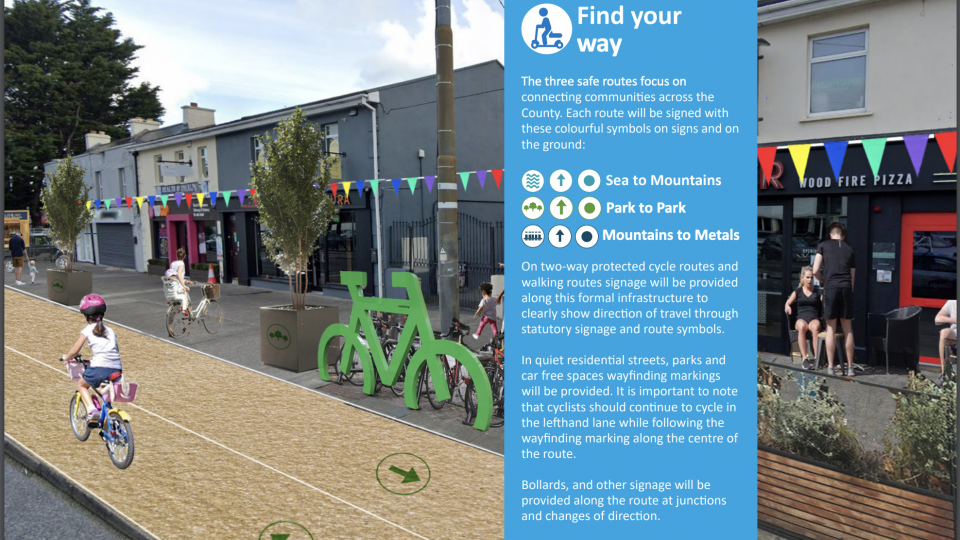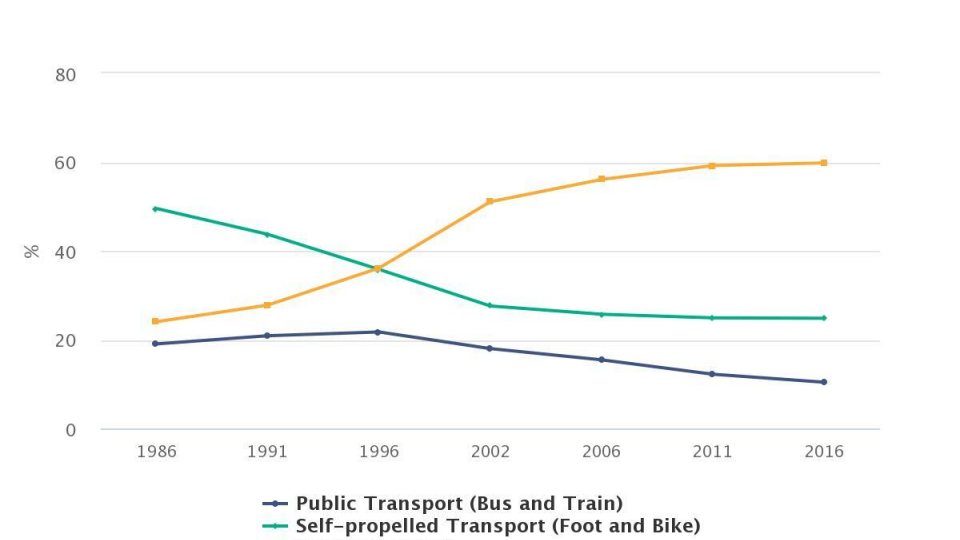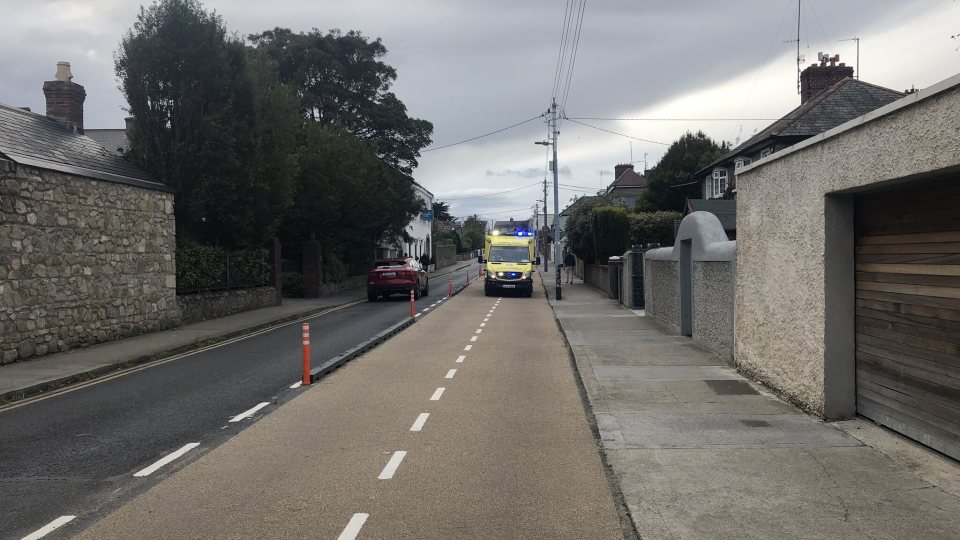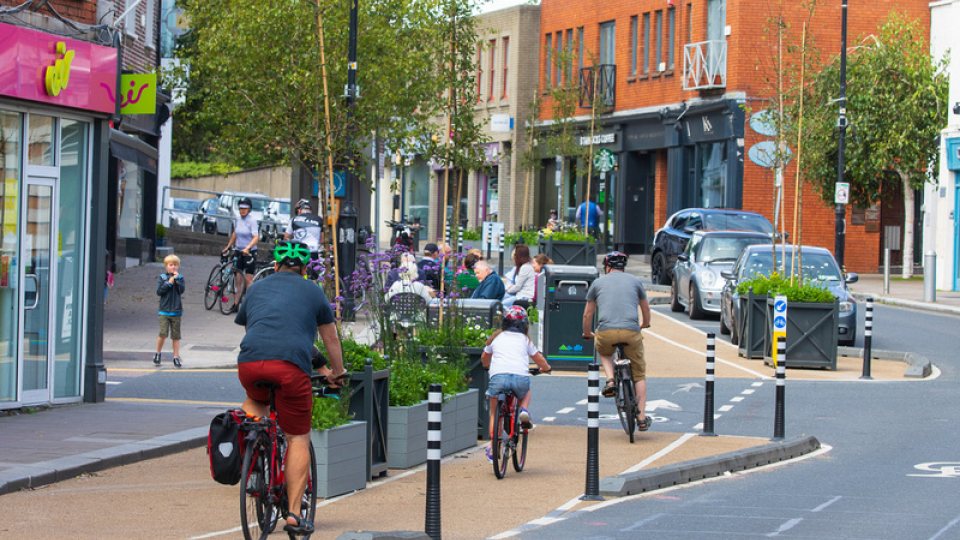Deansgrange
Deansgrange Road - Safe Routes to School
A key element of Dún Laoghaoire-Rathdown County Council’s (DLR) Safe Routes to School project is under threat, and your action is needed to show DLR Councillors the widespread support for this six month trial from local parents and kids. Read on for the facts and responses to statements issued by groups opposed to the scheme.
What can I do to help?
Complete the petition.
Email or write to your local councillor directly or via grpcouncillors@dlrcoco.ie now, but in any event before the meeting where this initiative is likely to be voted on by DLR councillors, on 13 September. Include personal details, i.e. neighbourhood and why the route can benefit you and your family/friends/business.
Share the word with other people who would like to cycle safely on Deansgrange Road and with any of your networks (e.g. parents groups, local clubs)
The Facts:
Dun Laoghaire Rathdown County Council (DLR) is, as part of an initiative to create safe routes for children to walk and cycle to school throughout the county, establishing a cohesive network of active travel routes.
This road connects two sections of the proposed Park to Park and Metals to Mountains Safe Travel to School Routes. This will provide a safe cycle route for people of all ages and abilities.
As part of this, an 800m stretch of Deansgrange Road will be made one way for motor vehicles, to be replaced with a bidirectional track for cycling, as part of a six month trial.
Deansgrange Road is currently unsafe for pedestrians, cyclists and other active travel users (e.g. parents with buggies, people in wheelchairs) with narrow footpaths close to vehicular traffic travelling at high speeds.
A six-week public consultation took place (see report), where the majority of respondents (3,987 of 6,431 submissions, or 63%) were in favour of the overall project. 499 submissions or c. 8% of overall submissions objected specifically to the Deansgrange element of Park to Park & Mountains to Metals routes.
We are in a climate emergency, with the recent IPCC report confirming that climate change is real, it’s happening, and we need to make drastic changes to our lives in order not to exceed 1.5 degrees of global warming by 2050.
Kids are not cycling to school, or to sports, shops etc, in the numbers that they used to. To illustrate, in 1986 49.5% of schoolchildren walked or cycled to school but, by 2016, this number had reduced to 24.8%, with the majority of those journeys being displaced by private car journeys. The reason for this shift is that our roads have become less safe for pedestrians and cyclists, and parents are understandably choosing to drive their children to school, putting more and more cars on the roads. It’s a vicious circle we need to break.
This plan will allow ‘000s of children to travel to school safely and independently, as well as enabling adults who want to cycle or scoot.
Every person who chooses to walk or travel by bike, etc, is one less car on the road. Less cars = less traffic and less pollution.
The active mobility and pedestrian schemes introduced by DLR since the onset of the COVID crisis have been phenomenally successful, beyond anyone’s wildest expectations, with hugely increased footfall for shops and a huge increase in cycling numbers.
Mythbusting
Myth 1: My business will be affected
DLR has successfully piloted active travel and pedestrian schemes in the county where this has shown to be untrue, and a recent report provides evidence for increased spending by foot and cycle traffic vs. motor traffic. Businesses in Blackrock and Dun Laoghaire have experienced the following:
“We were initially skeptical of mobility and pedestrianisation changes brought in by the Council, and found some of them inconvenient, but most of the challenges have been resolved and we’re really seeing the business benefit, with increased footfall and visibility of our restaurant, so we’re very happy overall. We are now taking upa cargo bike to make our local deliveries more convenient and eco-friendly” - Zero Zero Pizza, Patrick St, Dun Laoghaire.
“For our business, the changes to Blackrock Village have made a big, positive difference. The bookshop is considerably more busy, particularly on Sundays where we’re doing at least twice the business compared with pre-pandemic. There were delivery access issues for some businesses on Main Street due to the contraflow bike lane when the scheme was first implemented, but teething problems are to be expected with any substantial change and the Council was open to tweaking as was required. As a Blackrock business owner, the traffic changes have given us a huge boost, and as a resident they have, without question, vastly improved quality of life in the village.” - Raven Books, Main St, Blackrock Village.
Myth #2:There was no/inadequate consultation
Not true - DLR County Council ran a six-week consultation with information evenings, etc. Over 6,000 people responded to the consultation, with 63% overall in favour of the project.
Myth #3: Traffic will be chaos
Not true - every person on a bike is one less car on the road. By enabling people who want to travel by foot, bike, etc. and leaving the roads to those who genuinely need to drive, congestion will reduce. The cause of traffic congestion is simple - there are too many cars on our roads, caused by, in the main, too many short car journeys which could be largely replaced with walking and cycling.
Myth #4: Deansgrange will be destroyed
Not true - Deansgrange has been a by-word for congestion and pollution for many years. Dominated as it is by traffic and car parking, it is not a pleasant place to shop, drink coffee or eat outside. This trial will reduce the amount of cars travelling through Deansgrange village, and leave room for what are sorely-needed public realm improvements, which will enable people to shop, drink, eat & stay, similar to what has been achieved in Blackrock.
Myth #5: Neighbouring roads will become rat-runs
The point of the trial is to measure traffic flows and determine what changes are required to prevent rat-running, etc. To take two examples:
Businesses argue that St. Fintan’s Villas will become a rat run for food delivery traffic. This is an argument that is being put forward by those same food delivery businesses, who are using this as a threat to encourage opposition to the scheme. If you are concerned about this, you should reach out to your local councillor or directly to DLR to explore possible traffic filtering options to ensure that motor traffic uses the main roads in the area.
Residents argue that the Hollypark estate will become a rat run. Unfortunately Hollypark is already a rat run, and is gridlocked at key times with school traffic. This has been a problem for many years and the solution to this is to reduce the number of cars on our roads. Given most traffic is related to the three schools in the estate, enabling more kids to walk or cycle to school will reduce this traffic. If other rat running is identified, then this can be monitored and addressed during and as part of the trial - reaching out to DLR or your councillor on this point is recommended. Outright opposition to this scheme is only going to result in the same and increased levels of private vehicle traffic, which is in no-one’s interest.
Myth #6: Customers and residents will not be able to access homes/businesses/cemetery by car
Not true - the only change here is to make a section of Deansgrange Road one-way, with vehicular access to all driveways and business entrances maintained. The only impact on those seeking to access by car is that northbound destinations from Deansgrange village will need to go via Kill Avenue and Abbey Road - a sub-500m diversion!
Myth #7: I no longer have access to the bus as a result
Partly true - some people will have a slightly longer walk to bus stops, but many people will have a shorter trip - there is likely to be no overall change in access for public transport users and any identified issues can be addressed as part of the trial.
Myth #8: There are alternative routes which are better suited and which DLR refuses to consider
Not true - the purpose of this trial is to enable people to travel safely by active travel modes (walking, cycling, etc.) and to encourage modal shift, so to encourage people who can walk and cycle to do so. If a less direct, less segregated, and less safe route were chosen, this would continue the prioritisation of motor traffic in DLR which is preventing people moving to active modes. We are in a climate crisis and active travel and public transport modes need to be prioritised over private motor vehicles to make a difference.
Myth #9: Why do they call it a trial when we all know it’ll be permanent?
DLR has made it clear in all publications that it is a trial. It will be successful if it (1) increases the number of kids walking and cycling to school, (2) encourages modal shift, and (3) any traffic impacts including potential rat running can be addressed. If successful, why would you not implement it on a permanent basis with associated public realm improvements? Deansgrange has the potential to create a vibrant and cohesive village, similar to Blackrock and Monkstown - this can’t be achieved without removing some element of vehicular traffic.
Myth #10: Bike lanes are always empty
Not true - cycle lanes are incredibly efficient at moving people, as has been shown in numerous traffic surveys. Take a look at the Coastal Mobility Route - it is moving 20,000 bikes a week but never looks too crowded - imagine 20,000 extra car journeys per week and what that would look like in comparison.
Myth #11: Emergency vehicles won’t be able to access
Not true - emergency services in DLR can and do (see image below of ambulances using the Coastal Mobility Route during Summer ‘20) use the bike lanes and this often facilitates faster access to emergencies.
What can I do to help? (Reminder)
Complete the petition.
Email or write to your local councillor directly or via grpcouncillors@dlrcoco.ie now, but in any event before the meeting where this initiative is likely to be voted on by DLR councillors, on 13 September. Include personal details, i.e. neighbourhood and why the route can benefit you and your family/friends/business.
Share the word with other people who would like to cycle safely on Deansgrange Road and with any of your networks (e.g. parents groups, local clubs)
Help us do more for cycling in Dublin by becoming a member!




